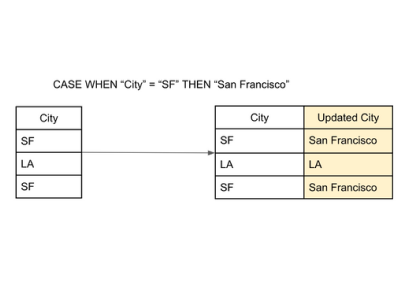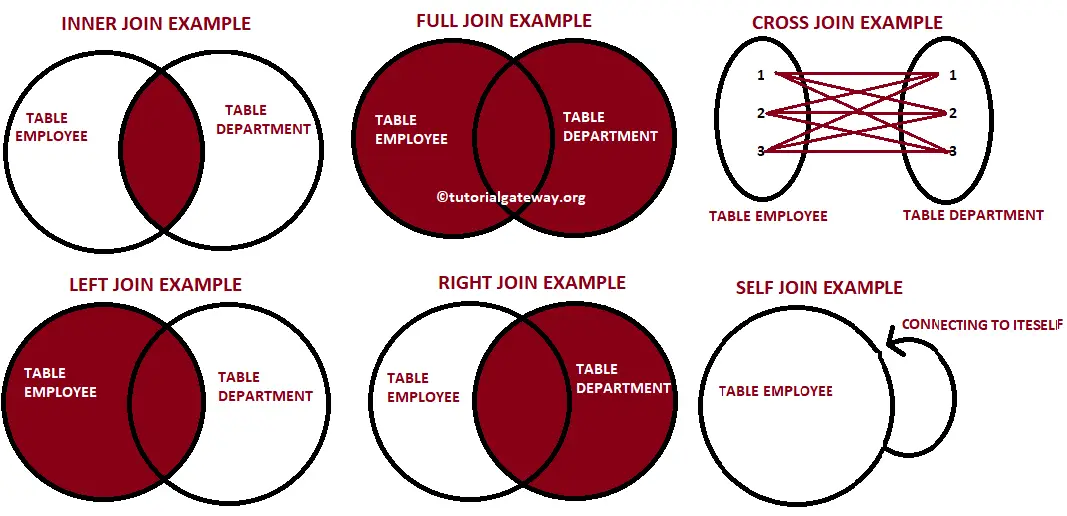What are the joins in SQL and their uses? How do I join the same table in SQL? There are four basic types of SQL joins : inner, left, right, and full. The easiest and most intuitive way to explain the difference between these four types is by using a Venn diagram, which shows all possible logical relations between data sets. A resource explaining what a SQL join is, examples of different join types, and the technical ETL documentation required to start joining tables.
Since SQL joins appear to be set-base the use of Venn diagrams to explain them seems, at first blush, to be a natural fit. Structured Query Language aka SQL is the core of relational databases with the help of which we can handle data. It provides us with various features such as Triggers, Injection, Hosting an Joins is just one of the most important concept to master in SQL. While doing joins within a specific data source can be helpful, joining data from multiple sources is the first step towards high-level analysis. For example, combining your marketing data from Adwords and your transaction data from Square can uncover actionable insights that allow companies to start moving the needle.
This brief tutorial explains JOINs and their use in MySQL and other relational databases. There are a few different types of joins , and the following should help explain the differences between them. Home Articles Misc Here. SQL Joins Explained Data Tutorial SQL Tips.

SQL for Beginners (Part 5) : Joins. Data from these sources come in all different forms and is difficult to join together. Stitch connects to all the sources below and more, seamlessly. Summary: this tutorial shows you how to use the SQL CROSS JOIN to make a Cartesian product of the joined tables.
Introduction to SQL CROSS JOIN clause. A cross join is a join operation that produces the Cartesian product of two or more tables. Things seem to make more sense as a picture. Right joins also should never really be used as they are extremely counterintuitive, they can always be written as a Left Join which is more logical and readable.

If I want all data in table A and any data that matches in table B, to me it makes logical sense to join from table A to table B and not the other way around. The first minutes teach you the basics. Inner Join, Left Outer Join, Right Outer Join, and Full Outer Join. The second minutes show you are few techniques that.
To query data from related tables, you often use the join clauses, either inner join or left join. SQL Server UPDATE JOIN syntax. The tutorial is a little elaborate to make sure that you understand different kind of joins and where you. The result of a join is always a single virtual table.
But so is the result of a query with no joins and only a single table! It doesn’t matter how many tables you have in your query—or many joined together—the result will always be a single virtual table with all of the columns from all of the tables. Various joins are used in the SQL Query. Primary keys , foreign keys and other candidate keys that we have in our tables are used to join different tables and match the data that needs to be related.
Here is the exaplanation of self join in layman terms. Self join is not a different type of join. If you have understood other types of joins (Inner, Outer, and Cross Joins ), then self join should be straight forward.

In INNER, OUTER and CROSS JOINS , you join or more different tables. However, in self join you join the same table with itslef. In this article i would like to give you the interview questions related to SQL joins. What is the Difference between Inner Joins and Outer Joins ? Both inner and outer joins are used to combine rows from two or more tables into a single result.
The join condition specifies how columns from each table are matched to one another. This is done using a join condition. Actual SQL implementations normally use other approaches, such as hash joins or sort-merge joins , since computing the Cartesian product is slower and would often require a prohibitively large amount of memory to store.
SQL specifies two different syntactical ways to express joins : the explicit join notation and the implicit join notation. The difference between inner join and outer join is as follow: Inner join is a join that combined tables based on matching tuples, whereas outer join is a join that combined table based on both matched and unmatched tuple.
Geen opmerkingen:
Een reactie posten
Opmerking: Alleen leden van deze blog kunnen een reactie posten.